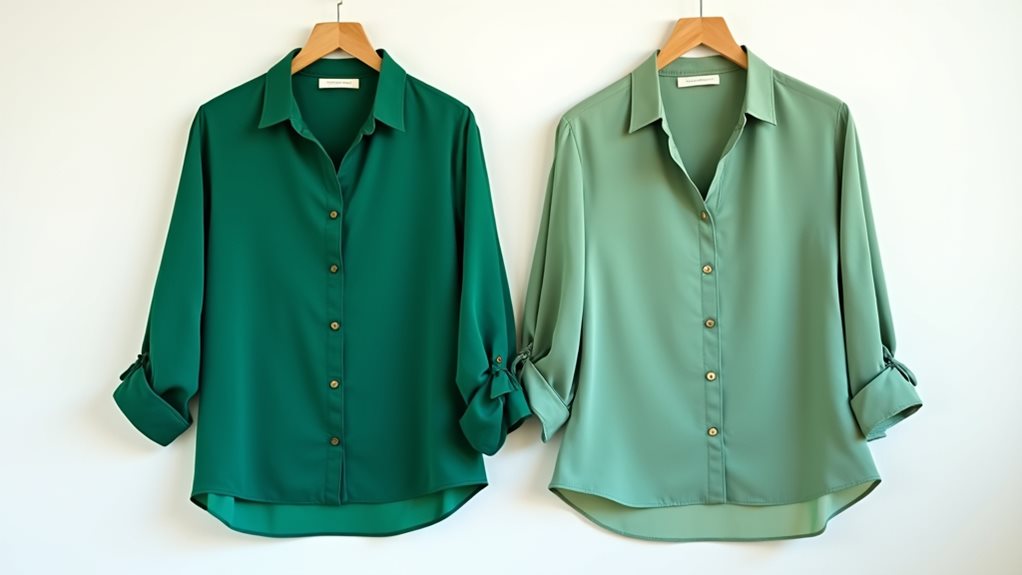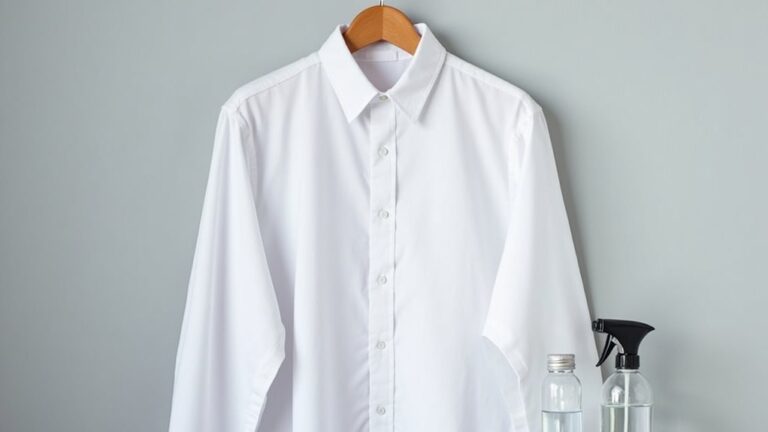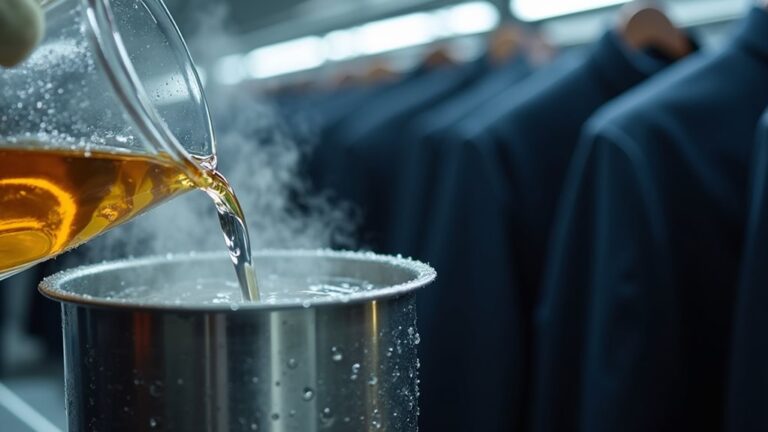Yes, dry cleaning can change your clothes’ colors, though it shouldn’t when done properly. I’ve watched my favorite black blazer develop brownish undertones after visiting a budget cleaner who used dirty solvents – it’s like washing in muddy water. Chemical reactions between harsh solvents like perchloroethylene and unstable dyes cause fading, while poor filtration allows old dyes to redeposit on your garments, creating that dingy, grayish appearance we all dread. Understanding what causes these changes helps you protect your wardrobe.
Common Causes of Color Changes During Dry Cleaning
When I first started noticing my favorite blazer looking slightly off after dry cleaning, I couldn’t quite pinpoint what was wrong until I realized the rich navy had shifted to an almost grayish hue.
After some detective work (and several disappointing wardrobe discoveries 😅), I learned that color changes happen for surprisingly predictable reasons.
The culprit often lies in dry cleaning solvents like perchloroethylene, which can react chemically with certain fabric dyes, causing them to fade or bleed.
Poor solvent filtration creates another problem, allowing previously extracted dyes and soils to redeposit onto your clothes, leaving them dingy.
Sometimes garments get faded after dry cleaning simply because their dyes aren’t colorfast, meaning they can’t withstand the chemical process despite what care labels suggest.
While dry cleaning excels at removing oil-based stains and preserving delicate fabrics like silk and wool, the chemical solvents that make this possible can unfortunately interact with unstable dyes in unexpected ways.
How Dirty Solvents Affect Garment Appearance
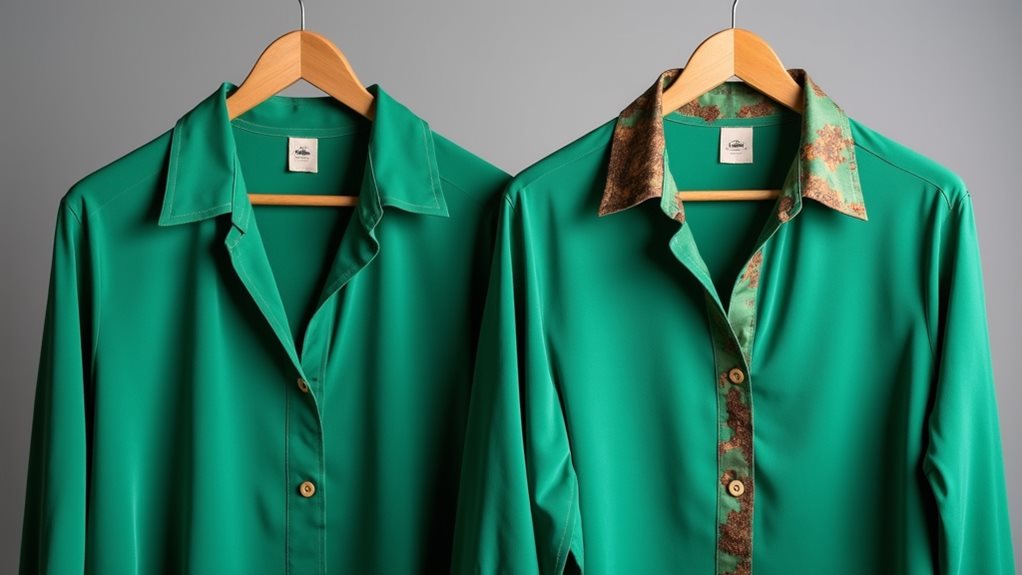
Although most people assume that dry cleaning solvents stay clean throughout the process, I’ve discovered through some unfortunate experiences that dirty solvents can absolutely wreak havoc on your clothes’ appearance.
When I dropped off my favorite black wool coat and picked it up looking mysteriously dull, I learned that dirty solvents literally extract dyes from colored garments, leaving them faded and lifeless.
Think of it like washing dishes in muddy water – you’re not really cleaning anything! The telltale sign is when solvents turn discolored instead of remaining crystal clear.
Poor filtration means soils get redeposited onto your clothes, creating that dingy, grayish appearance that makes you wonder if you’ve accidentally aged your wardrobe by several years. 😅
Clean dry cleaning solvents like perchloroethylene are designed to prevent color bleeding and fading, but contaminated solvents can have the opposite effect on your garments.
The Role of Chemical Reactions in Color Loss
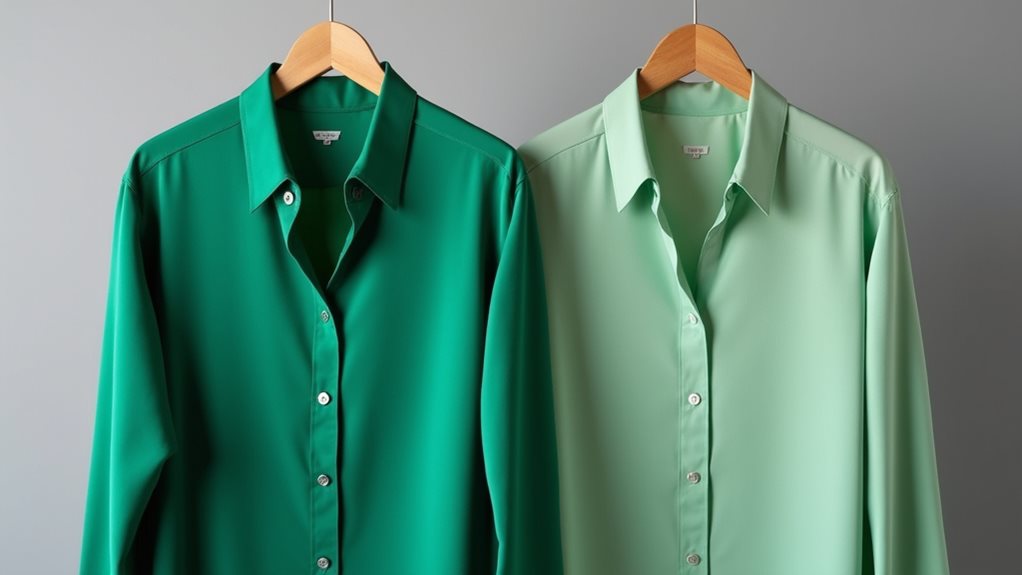
While dirty solvents can certainly dull your clothes, the real culprit behind dramatic color changes lies in the chemical warfare happening between your garment’s dyes and the cleaning solvents themselves.
When you drop off that gorgeous red dress, you’re fundamentally introducing two chemicals that mightn’t play well together. Traditional solvents like perchloroethylene create chemical reactions with certain dyes, causing them to break down, bleed, or fade completely.
I’ve seen pink blouses turn pale salmon and black pants develop strange brown undertones – it’s heartbreaking, really.
Your care label becomes your best friend here, guiding you toward cleaners who use gentler, fabric-friendly solvents that won’t wage war on your wardrobe. Despite these risks, professional dry cleaning remains significantly gentler on fabrics and causes less color fading than traditional home washing methods.
When Improper Cleaning Methods Lead to Fading

Beyond the chemical battles between dyes and solvents, sloppy cleaning techniques can turn your favorite outfits into shadows of their former selves, and I’ve watched too many beautiful garments fall victim to careless practices.
When cleaners use unfiltered solvents or reuse dirty fluid, your dark garments lose their vibrancy through dye extraction, leaving them looking tired and washed out.
Wet cleaning items marked “dry clean only” usually causes cotton and linen to fade dramatically, creating that dull, lifeless appearance you’ll recognize instantly.
I’ve also seen redeposition of soils create dingy, gray shadows on once-pristine fabrics – it’s heartbreaking, really.
Traditional dry cleaning processes using perchloroethylene can be particularly harsh on fabric fibers, accelerating color degradation and weakening the material structure over time.
That’s why I always recommend finding cleaners who use crystal-clear solvents like siloxane to preserve your garments’ original brilliance.
Preventing Color Damage Through Proper Dry Cleaning Practices
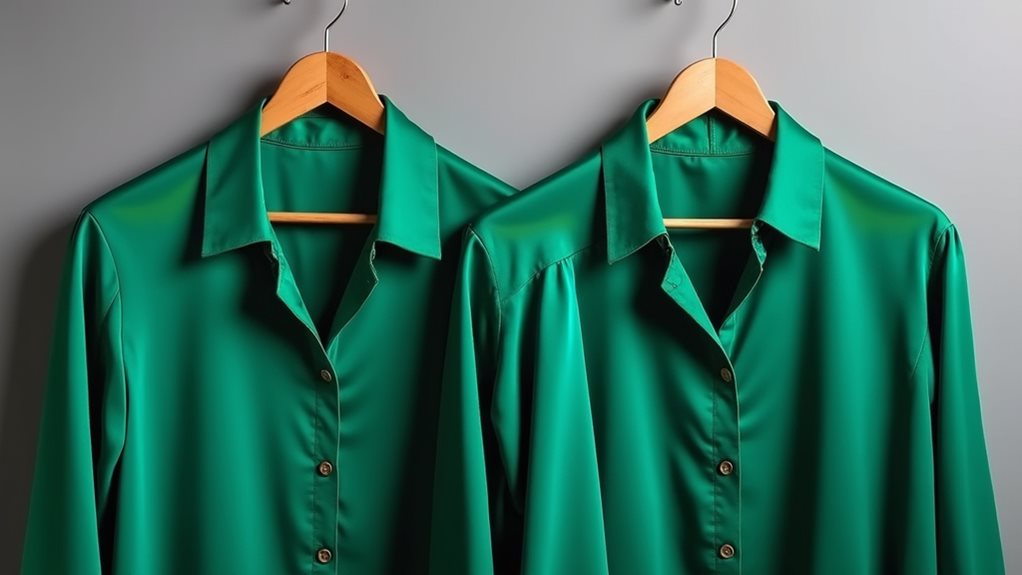
When I discovered that my favorite silk blouse had been rescued from near-disaster by a careful cleaner who used pristine siloxane solvents, I realized that protecting your garments’ colors isn’t just about luck – it’s about choosing the right professionals and practices.
You’ll want to seek cleaners who employ crystal clear, non-reactive solvents that won’t chemically interact with your garment’s dyes, maintaining that vibrant appearance you love.
Ask about their solvent distillation practices – quality cleaners refresh their solvents frequently to prevent redeposition of dirt that creates that dreaded grayish tinge.
According to the International Laundry Institute, All Rights Reserved studies show that following care instructions carefully prevents fading, since not all dyes resist dry cleaning equally.
Professional dry cleaners also use pre-treating stains as an essential first step to ensure thorough cleaning without compromising the fabric’s original color integrity.

